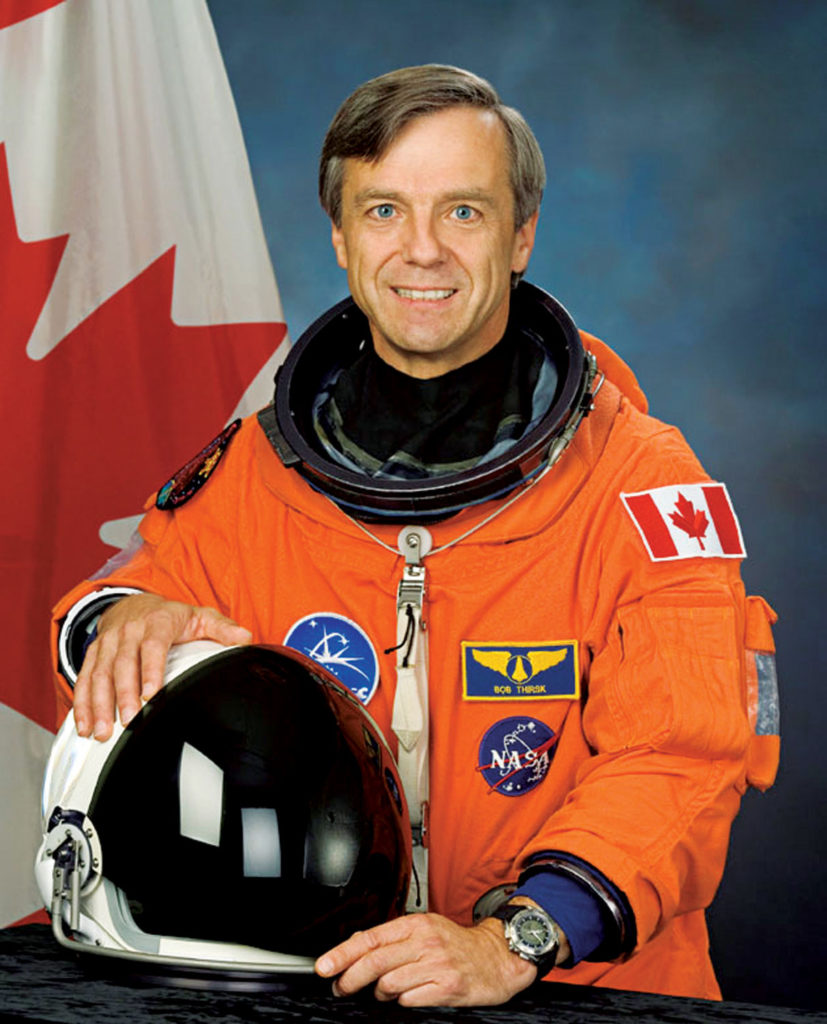Dallas Kasaboski
CONTRIBUTOR
Robert Thirsk has experienced something few people in history ever have: he has traveled to space.
On Oct. 27, he came to York to let us know what it’s like.
Introducing Dr. Thirsk isn’t easy, as he holds several degrees from various institutions and is a member of numerous faculties and associations, including the College of Family Physicians of Canada, Professional Engineers Ontario, and the Canadian Aeronautics and Space Institute.
The event reviewed and applaud- ed the work of several York professors in the Bodies In the Space Environment (BISE) program, one of several hundred experiments initiated by various institutions from all over the world. Several other Canadian universities were involved in the project, including schools from Halifax, British Columbia and the University of Toronto.
Last year, Thirsk and two other astronauts made the journey to the International Space Station via a Russian Soyuz rocket. Once aboard the station, Thirsk and his fellow crew members began the experiments. Though an expert in several fields, including materials and mechanical engineering, Thirsk’s main concern was the physical effects of the space environment. Working on the BISE program, Thirsk and his team were able to better catalogue the effects of weightlessness on the human body, including cardiovascular, muscular and orthopaedic symptoms.
Thirsk and his fellow astronauts made time between working, enjoying the view of the earth from about 400 kilometres high and ex- ercising to stave off the effects of the weightlessness they were studying, to be paid a visit – twice. Fellow Canadian Julie Payette boarded the shuttle Endeavour to rendezvous with Thirsk, marking the first time two Canadians met in space.
After two weeks, Thirsk and his team wished Endeavour a fond farewell, but life on the Interna- tional Space Station wouldn’t go back to normal for some time; Guy Laliberte?, CEO of Cirque du Soleil, soon made his way to the station, wearing his trademark red clown nose.
Thirsk’s video presentation captured all of the fun, spectacle and innovative research performed by his crew and concludes with the touchdown, or as Thirsk humorously calls it, “crash,” of the Soyuz crew’s capsule after over 200 days in orbit.
Thirsk ended his presentation by handing out a couple of gifts to York University and the professors who worked on the BISE mission on Earth. The professors were given plaques engraved with images of the Soyuz rocket, pictures of the crew and custom First Nations designs capturing the spirit of the mission.
To York University, Thirsk presented a mission badge, which he hoped would be displayed proudly to inspire us, the next generation, to carry on the tradition and reach for the stars.
Thirsk announced his retirement from the space industry as of Oct 25; his absence will be strongly felt by the scientific community. However, his energy, optimism and achievements will help to make life in space a reality. At the very least, it was a nice way to break up midterms, and give a ray of hope that students can carry through the toughest exams.

York gets a taste of space


